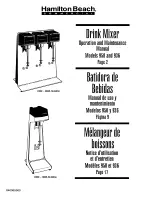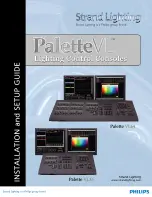
Mackie DL806 and DL1608 Reference Guide
53
Chapter 9: Channel View : EQ
Introduction
The equalizer area accesses all EQ-related parameters such as EQ for the selected channel (including gain,
frequency and Q), a high-pass filter (HPF) and polarity invert. The input channels, reverb, delay and iPad
channels all have up to 4-band EQ with high shelving, high-mid peaking, low-mid peaking and low shelving.
Shelving means that the circuitry boosts or cuts all frequencies past the specified frequency. Peaking means
that certain frequencies form a “hill” around the center frequency. All channel inputs also have a high-pass
filter [HPF].
You can really upset things with too much EQ. Each EQ band has a lot of boost and cut
because that is needed on occasion. But if the EQ is maxed on every channel, the mix turns
to mush. Equalize subtly, using cut, as well as boost. If you find yourself repeatedly using
a lot of boost or cut, consider altering the sound source, such as placing a mic differently,
trying a different kind of mic, a different vocalist, changing the strings, gargling, or all of the above.
There are actually two different types of EQ to choose from on each channel: clean, surgical modern EQ
and classic sounding vintage EQ. That’s right, you can mix and match to heart’s content! We will dissect
both the modern and vintage EQs separately, but let’s begin by taking a peek at what features apply
to both. Modern EQ is discussed further on pages 55-60, while more information about the vintage EQ
may be found on pages 61-62.
Содержание DL806
Страница 1: ...Mackie DL806 and DL1608 Reference Guide 1...
Страница 160: ...Mackie DL806 and DL1608 Reference Guide 160...
















































